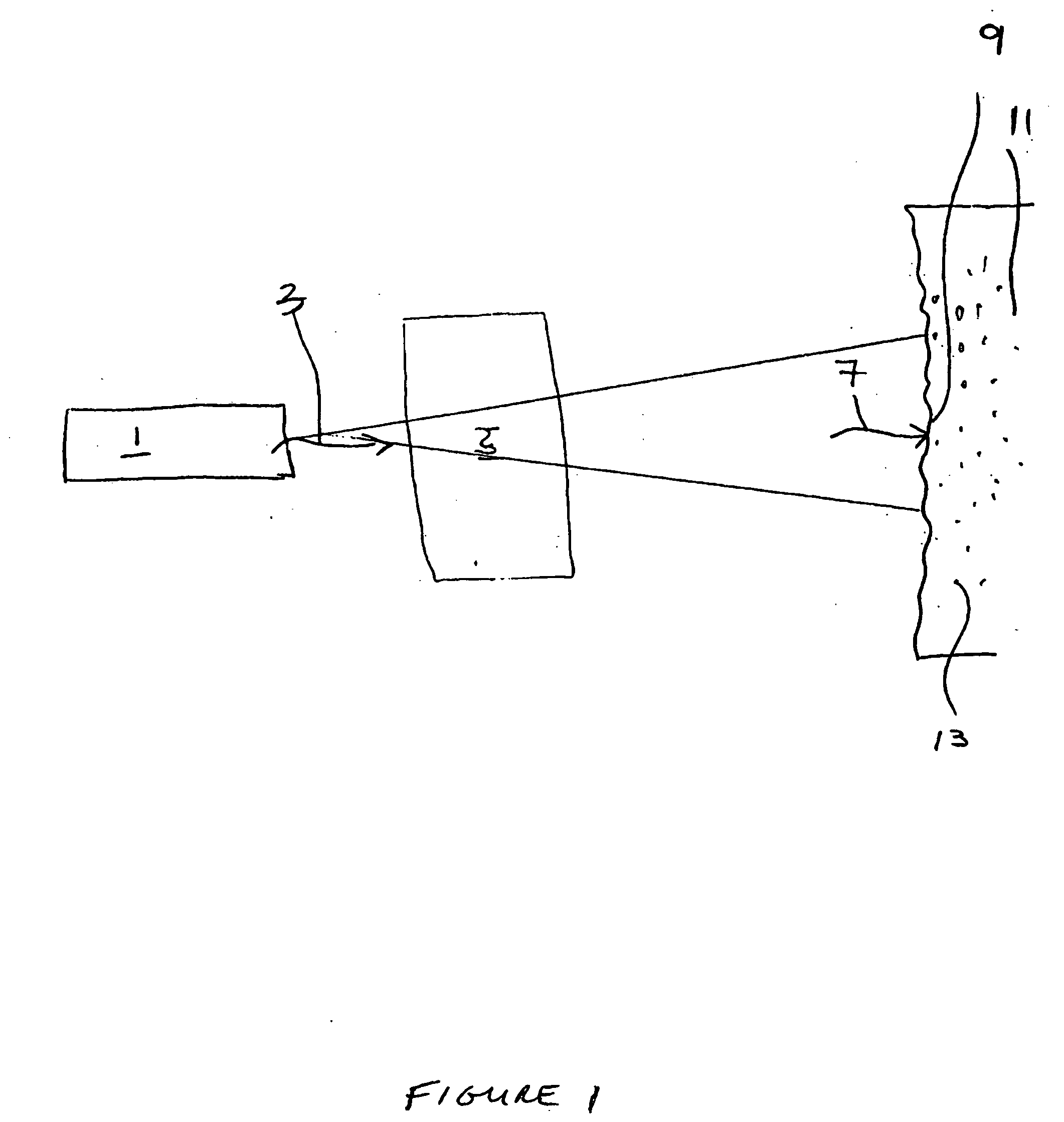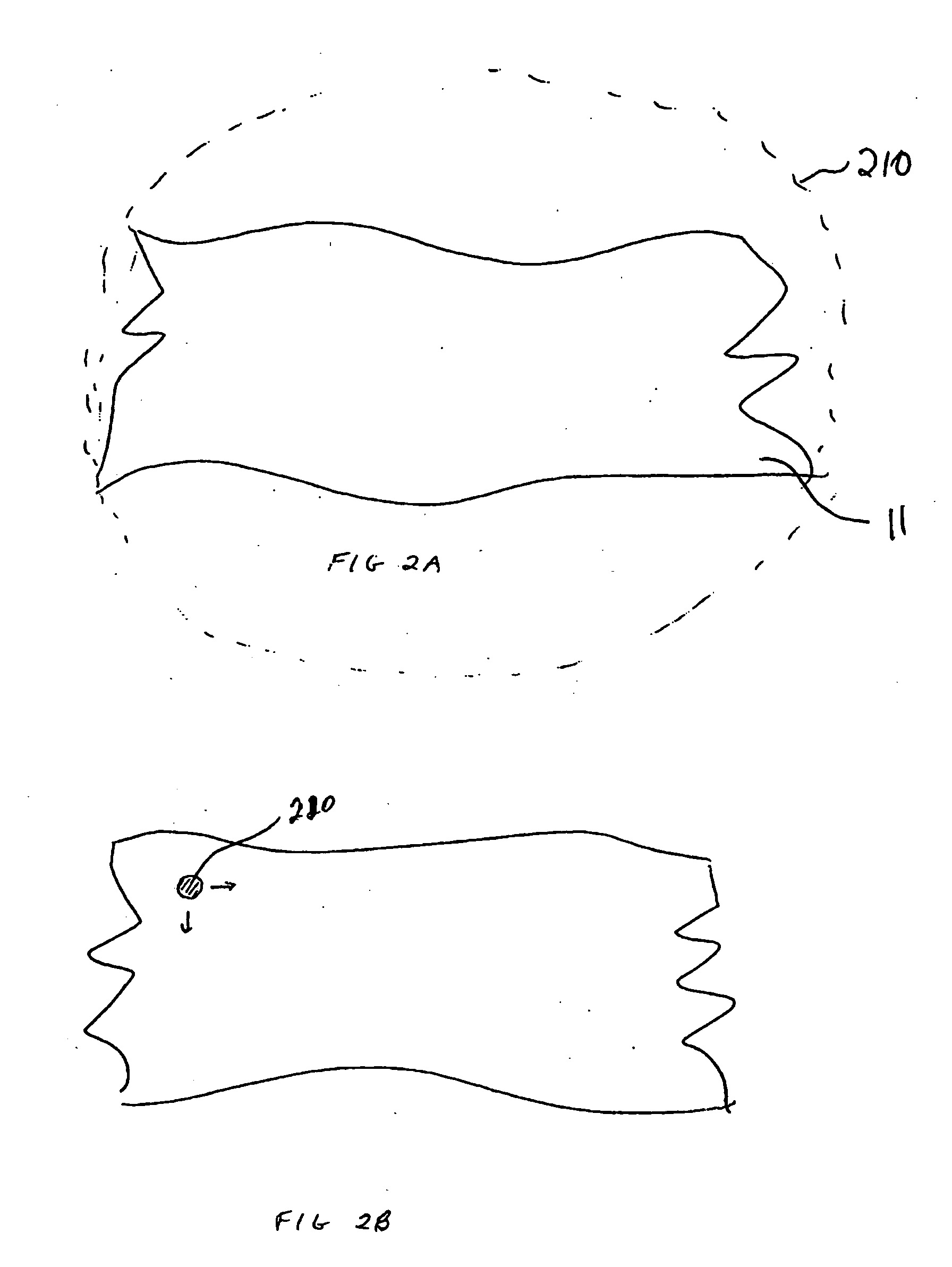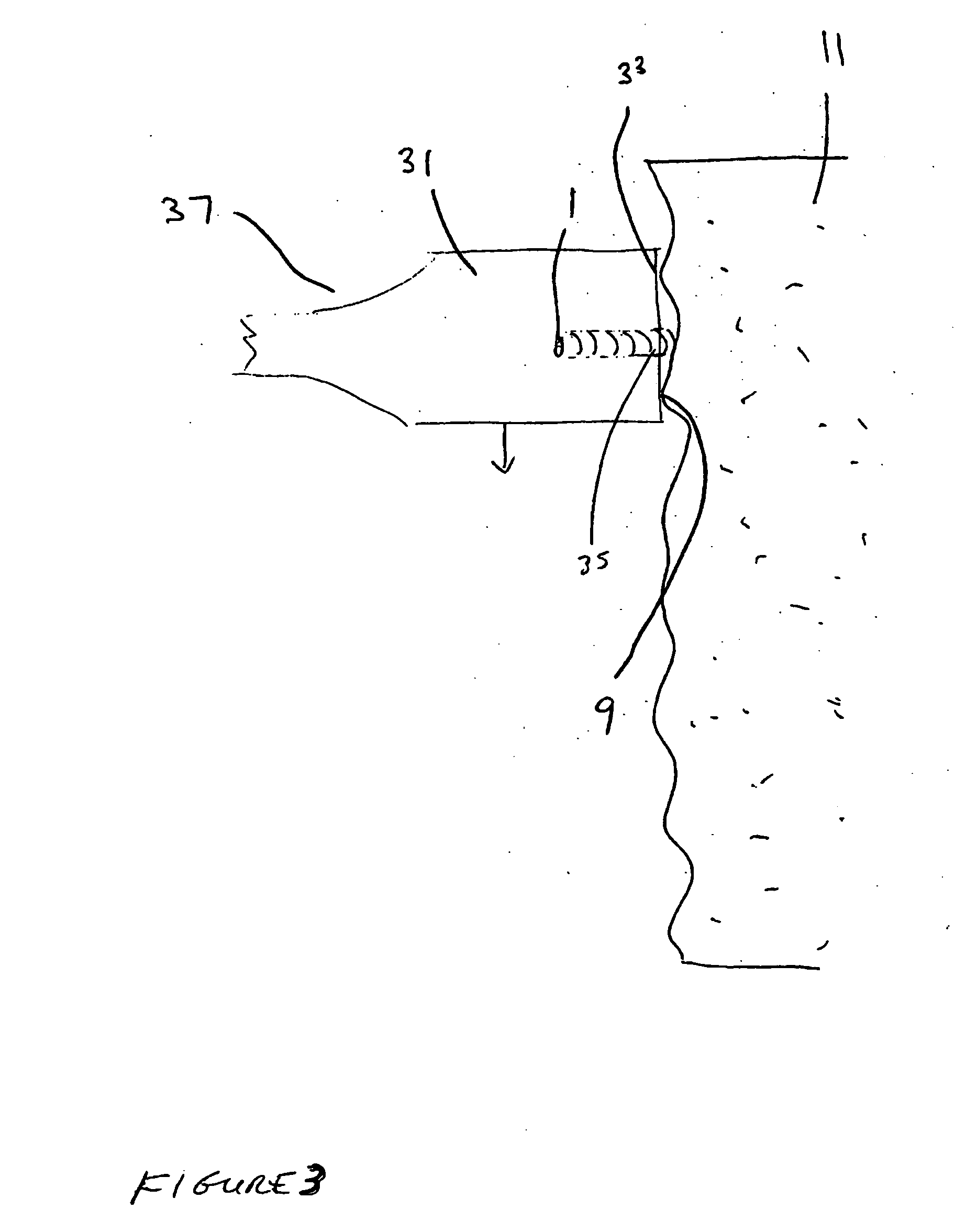Treatment of skin with light and a benefit agent to mitigate acne
a technology of skin and light, applied in the field of skin treatment, can solve the problems of solitary mechanism prone to diminishing returns, conventional practices subject to several drawbacks, and no cure for these diseases, so as to promote topical composition, reduce inflammation, and reduce inflammation.
- Summary
- Abstract
- Description
- Claims
- Application Information
AI Technical Summary
Benefits of technology
Problems solved by technology
Method used
Image
Examples
example 1
[0077] An expanse of skin is treated with a light from a flashlamp light source (such as one having a xenon-filled quartz-envelope and) including any necessary filters to provide a spectral distribution that is primarily within the union of 400 to 450 nm and 600 nm to 700 nm, a bandwidth of 10 nm, a fluence of 5 to 50 J / cm2 and delivered in a pulse of less than 1 second, impinges with a spot size of about 5 to 10 cm2 on an expanse of skin. The light source is repositioned (stamped) across adjacent sites to complete treatment over the entire expanse of skin (e.g., an portion of or an entire face).
[0078] Within a first time interval of about an hour after the light treatment is completed, a benefit agent comprising salicylic acid is topically applied to the expanse of skin. After about 24 to 48 hours, the above steps (light treatment, then topical treatment after 1 hour) are repeated.
example 2
[0079] An expanse of skin is treated with a light from flashlamp light source such as one having including any necessary filters to provide a spectral distribution that is primarily within primarily within the union of 400 to 450 nm and 600 nm to 700 nm, a bandwidth of 10 nm, a fluence of 5 to 50 J / cm2 and delivered in a pulse of less than 1 second, impinges with a spot size of about 5 to 10 cm on an expanse of skin. The light source is repositioned (stamped) across adjacent sites to complete treatment over the entire expanse of skin.
[0080] Within a first time interval of about an hour after the light treatment is completed, a benefit agent comprising an alpha-hydroxy or poly hydroxy acid is topically applied to the expanse of skin. After about 24 to 48 hours, the above steps (light treatment, then topical treatment after 1 hour) are repeated.
example 3
[0081] An expanse of skin is treated with a light from flashlamp light source such as one having including any necessary filters to provide a spectral distribution that is primarily within primarily within the union of 400 to 450 nm and 600 nm to 700 nm, a bandwidth of 10 nm, a fluence of 5 to 50 J / cm2 and delivered in a pulse of less than 1 second, impinges with a spot size of about 5 to 10 cm on an expanse of skin. The light source is repositioned (stamped) across adjacent sites to complete treatment over the entire expanse of skin.
[0082] Within a first time interval of about an hour after the light treatment is completed, a benefit agent comprising a retinoid such as retinoic acid is topically applied to the expanse of skin. After about 24 to 48 hours, the above steps (light treatment, then topical treatment after 1 hour) are repeated.
PUM
| Property | Measurement | Unit |
|---|---|---|
| wavelength | aaaaa | aaaaa |
| wavelength range | aaaaa | aaaaa |
| band of wavelengths | aaaaa | aaaaa |
Abstract
Description
Claims
Application Information
 Login to View More
Login to View More - R&D
- Intellectual Property
- Life Sciences
- Materials
- Tech Scout
- Unparalleled Data Quality
- Higher Quality Content
- 60% Fewer Hallucinations
Browse by: Latest US Patents, China's latest patents, Technical Efficacy Thesaurus, Application Domain, Technology Topic, Popular Technical Reports.
© 2025 PatSnap. All rights reserved.Legal|Privacy policy|Modern Slavery Act Transparency Statement|Sitemap|About US| Contact US: help@patsnap.com



